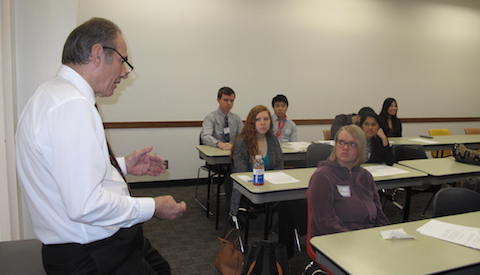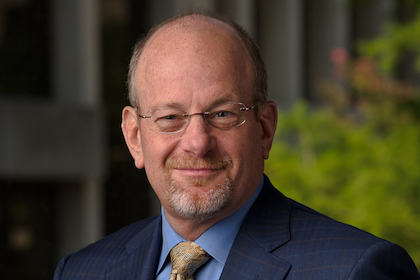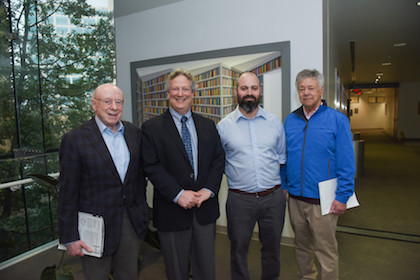Interschool Convergence training heightens familiarity with modern health care concerns
By Lin Lofley

UT Southwestern Medical School hosted Convergence 2016 recently, highlighted with students from five educational institutions gathering to consider the example family dynamic: an elderly couple, their daughter, and their respective places in today’s team structure of care.
Students from UT Southwestern Medical School and UT Southwestern School of Health Professions participated in the two-part event on the South Campus along with fellow students from the UT Arlington College of Nursing and Health Innovation, the Texas Tech University Health Sciences Center School of Pharmacy, and the Texas Woman’s University College of Nursing.
Convergence 1, in early March, introduced small groups to roles and responsibilities of different health professions, communication styles, and selected team skills. Convergence 2, held later in the month, allowed students to practice leadership and communication skills in a simulated team meeting. In all, about 700 students and 80 facilitators – faculty members from the participating schools – took part in the event.
At the center of the case discussion section was the “Cooper” family, conceived to illustrate common circumstances facing the elderly.
The patriarch of the family, showing the normal aging processes of a 90-year-old, is his wife’s caregiver but he’s adamant that he won’t go into nursing care. Mrs. Cooper, 87, is recovering from a broken hip suffered in a fall, and is suffering mild cognitive impairment. Their daughter, Mrs. Allen, is their only child living close by.
In small facilitator-led groups, students role-played family members in addition to the parts of health professionals participating in decision-making about the future care of Mrs. Cooper. Students also took on the roles of physician, physician assistant, registered nurse, pharmacist, social worker, physical therapist, rehabilitation counselor and clinical nutritionist.
In one group, Dr. Gerald Casenave, Associate Professor of Rehabilitation Counseling, explained to the eight students attending the session that the role-playing was intended to show the intricacy of interaction between health care professionals and family members in times when decision-making can result in a great deal of stress.
Face-to-face meetings of all members of the team, he said, should give the participants a better understanding of how decisions are arrived at.
“Forty or 50 years ago there was not the breadth of health professions there is today,” Dr. Casenave said. “People just did what the doctor told them they should do. Those days are gone.”
Dr. Kristine Kamm, Professor of Physiology, and Director of Convergence, said, “We are pleased to collaborate with our neighboring institutions of nursing and pharmacy this year. These partners enhance interprofessional education with the goal of students from multiple professions learning about, from, and with, each other to enable effective collaboration and improve health outcomes.”



